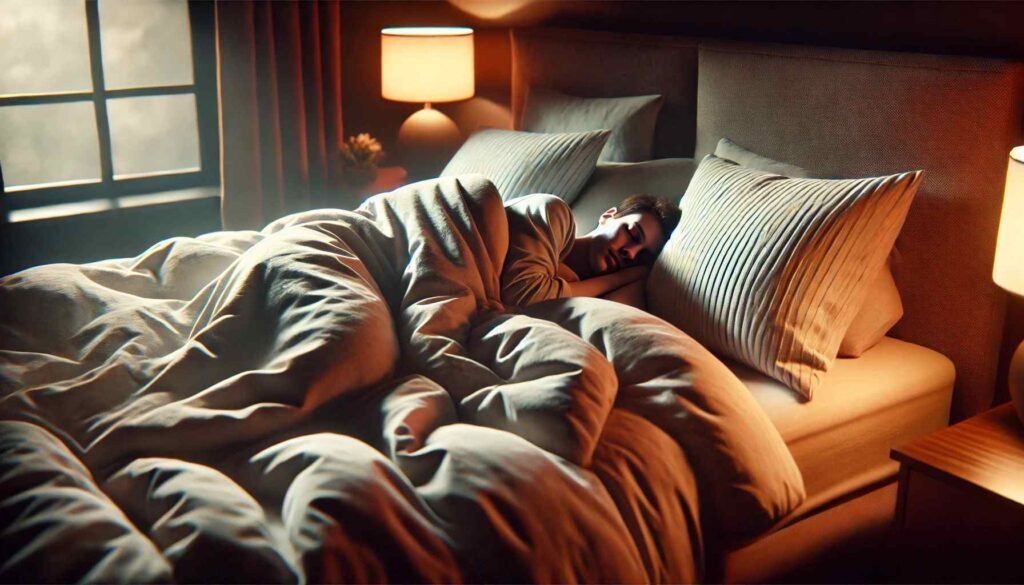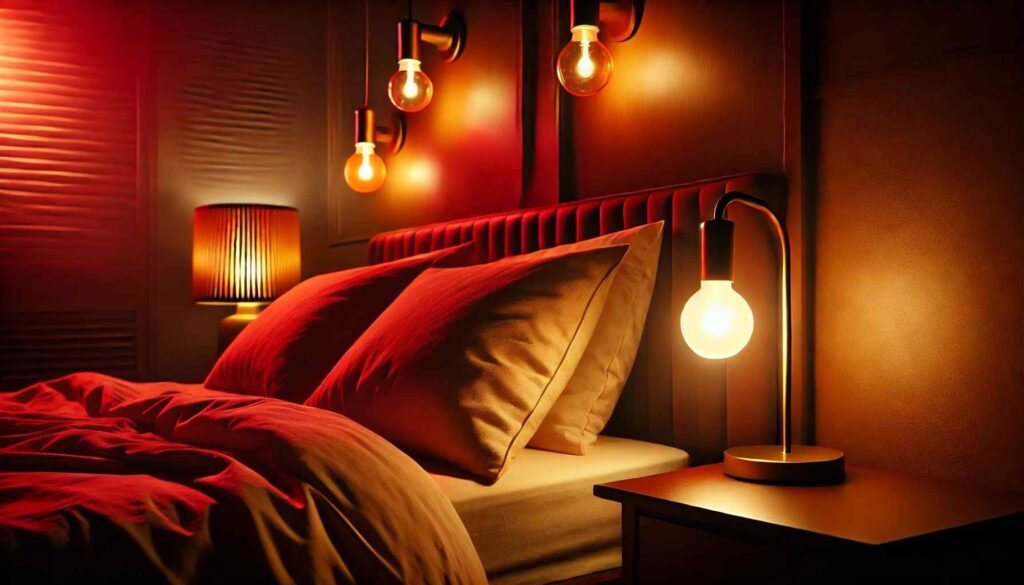Struggling with restless nights? While the usual advice—like limiting screen time and maintaining a bedtime routine—is helpful, sometimes we need a little extra push toward quality sleep. That’s where these unconventional sleep hacks come in.
1. Use a weighted blanket

The deep pressure stimulation mimics a comforting hug, reducing anxiety and promoting deeper sleep. I personally use this and since I’ve implemented it into my sleep routine, I sleep sounder and faster than I ever did before. And a “weighted blanket” in my case is just a blanket on top of my comforter. It really works wonders!
2. Lie on an acupressure mat
These mats stimulate pressure points to reduce tension and trigger melatonin production.
An acupressure mat works by using thousands of small, firm spikes to apply pressure to the body, stimulating acupressure points. They’re actually inspired by ancient Chinese acupressure therapy and are designed to promote relaxation and relieve tension.
How it works:
- Pressure Stimulation
- When you lie on the mat, the spikes press into your skin, activating pressure points that correspond to different areas of your body.
- Increased Blood Circulation
- The stimulation encourages blood flow, delivering oxygen and nutrients to muscles and tissues, helping with recovery.
- Muscle Relaxation
- Helps relieve tension in the back, neck, shoulders, and legs, promoting deeper relaxation and sleep.
How to Use an Acupressure Mat:
- Lying Down: Start with 10-20 minutes on your back (on a soft surface for beginners, like a bed).
- Standing or Sitting: Use under feet for reflexology benefits or on a chair for back support.
- Head & Neck: Use a smaller pillow version for tension headaches and neck pain.
- Gradual Adaptation: It may feel intense at first, but after a few minutes, the body adjusts, and warmth spreads.
3. Reverse psychology trick
Instead of forcing yourself to sleep, try keeping your eyes open and telling yourself to stay awake. Basically reverse the flow. This can trick the brain into falling asleep faster by taking the pressure off “needing to go to sleep” but being unable to.
4. Cool your hands and feet

Sleep comfort varies depending on the season and the individual. While wearing socks to bed can help some people, others may sleep better with cooler feet. If you wake up during the night, cooling your palms and soles may help make you sleepy again. Or if you aren’t wearing socks and find it hard to sleep, try putting socks on to warm your feet up.
5. Use pink noise instead of white noise
Pink noise (like steady rain or rustling leaves) has been shown to enhance deep sleep better than white noise.
6. Sleep with your head facing north (or another optimal direction)

Some people follow Feng Shui, which suggests that aligning your bed direction with the Earth’s magnetic field can improve sleep quality.
7. Practice reverse psychology
Instead of trying to sleep, engage in a mundane task (in dim lighting), like organizing a drawer or folding laundry, until sleepiness naturally takes over.
8. Mimic sunset lighting in the evening

Use red or amber bulbs at night instead of bright LEDs to signal to your brain that it’s time to wind down.
9. Do a “yawn trick”

Even if you’re not tired, force yourself to yawn multiple times in a row. Yawning signals the brain to release relaxation hormones, helping you fall asleep quicker.
Getting good sleep doesn’t always mean following the usual advice. Sometimes, trying something different—like using a weighted blanket, cooling your feet, or even tricking your brain with reverse psychology—can make all the difference. Sleep is personal, so experiment with these simple hacks to see what works best for you. A well-rested mind and body can improve your mood, focus, and overall health. Sweet dreams!



